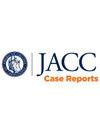心脏内肿块的真空辅助抽吸作为手术的桥梁或替代方法
Q4 Medicine
引用次数: 0
摘要
背景:有效的心内膜炎可通过在瓣膜组织上形成植被导致栓塞事件和瓣膜破坏。感染性心内膜炎的常规治疗通常包括使用抗菌药物和/或手术干预。然而,处理大瓣膜赘生物可能具有挑战性,因为与紧急手术相关的潜在风险,特别是在患有合并症的患者中。机械和真空辅助抽吸装置在诊断和治疗通过有效去除或减少植被大小的选定患者方面的经验有限。我们报告了6例右侧或左侧感染性心内膜炎患者的病例系列,他们都成功地接受了真空辅助抽吸导管的治疗。我们的病例系列强调了血管动力学(angioovac)系统作为管理感染性心内膜炎高危患者的一种潜在的新治疗方法。我们演示了使用AngioVac进行有效植被提取的技术。本文章由计算机程序翻译,如有差异,请以英文原文为准。
Vacuum-Assisted Aspiration of Intracardiac Masses as a Bridge or Alternative to Surgery
Background
Infective endocarditis may lead to embolic events and valve destruction by the formation of vegetation on valvular tissue. The conventional course of therapy for infective endocarditis often involves the use of both antimicrobial medications and/or surgical intervention. However, managing large valvular vegetations may be challenging because of the potential risk associated with urgent surgery, particularly in patients with comorbid illnesses. Mechanical and vacuum-assisted aspiration devices have been used with limited experience in both diagnosing and treating selected patients by effectively removing or reducing the vegetation size.
Case Summary
We report a case series of 6 patients with either right-sided or left-sided infective endocarditis who were treated successfully with vacuum-assisted aspiration catheter.
Discussion
Our case series highlights the use of the AngioVac system (AngioDynamics) as a potential novel treatment approach in managing high-risk patients with infective endocarditis. We demonstrate the techniques used for effective vegetation extraction using the AngioVac.
求助全文
通过发布文献求助,成功后即可免费获取论文全文。
去求助
来源期刊

JACC. Case reports
Medicine-Cardiology and Cardiovascular Medicine
CiteScore
1.30
自引率
0.00%
发文量
404
审稿时长
17 weeks
 求助内容:
求助内容: 应助结果提醒方式:
应助结果提醒方式:


